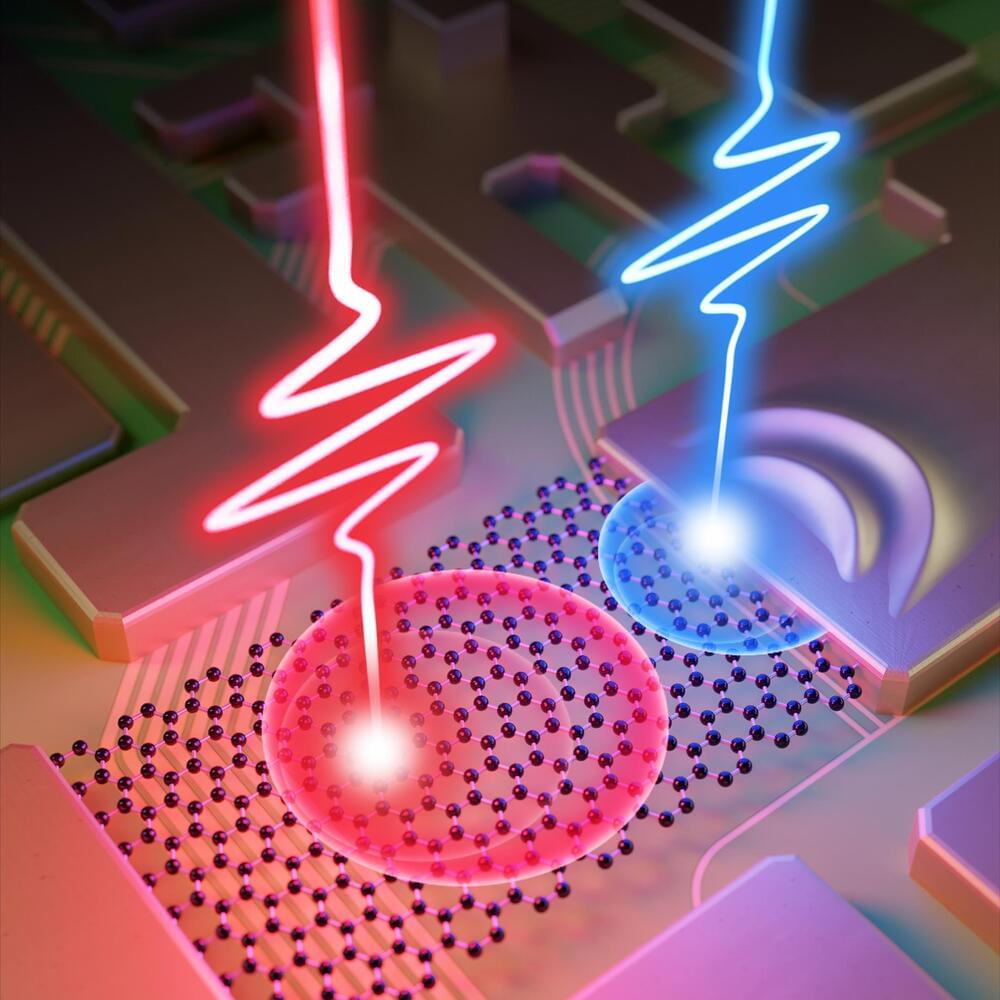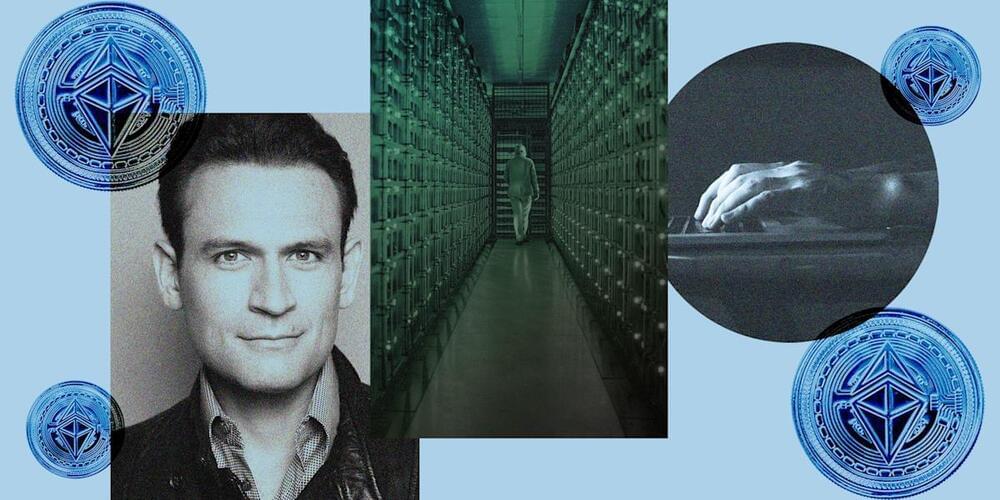Cutting-edge computer technology designed to mimic the human brain is being used by hackers to create lifelike videos of celebrities and politicians. But now, bad actors are using this readily available tech to target everyday social media users in cryptocurrency scams.
Category: computing – Page 554
Olaf Sporns: Connectivity and Fine-Scale Dynamics of Human Brain Networks
Networks (connectivity) and dynamics are two key pillars of network neuroscience – an emerging field dedicated to understanding structure and function of neural systems across scales, from neurons to circuits to the whole brain. In this presentation I will review current themes and future directions, including structure/function relationships, use of computational models to map information flow and communication dynamics, and a novel edge-centric approach to map functional connectivity at fine temporal scales. I will argue that network neuroscience represents a promising theoretical framework for understanding the complex structure and functioning of nervous systems.
This video is part of the SNAC seminar series organized by Mac Shine, Joe Lizier, and Ben Fulcher (The University of Sydney).

Laser Pulses for Ultrafast Signal Processing Could Make Computers a Million Times Faster
Simulating complex scientific models on the computer or processing large volumes of data such as editing video material takes considerable computing power and time. Researchers from the Chair of Laser Physics at Friedrich-Alexander-Universität Erlangen-Nürnberg (FAU) and a team from the University of Rochester in New York have demonstrated how the speed of fundamental computing operations could be increased in the future to up to a million times faster using laser pulses. Their findings were published on May 11, 2022, in the journal Nature.
The computing speed of today’s computer and smartphone processors is given by field-effect transistors. In the competition to produce faster devices, the size of these transistors is constantly decreased to fit as many together as possible onto chips. Modern computers already operate at the breathtaking speed of several gigahertz, which translates to several billion computing operations per second. The latest transistors measure only 5 nanometers (0.000005 millimeters) in size, the equivalent of not much more than a few atoms. There are limits to how far chip manufacturers can go and at a certain point, it won’t be possible to make transistors any smaller.
Physicists are working hard to control electronics with light waves. The oscillation of a light wave takes approximately one femtosecond, which is one-millionth of one billionth of a second. Controlling electrical signals with light could make the computers of the future over a million times faster, which is the aim of petahertz signal processing or light wave electronics.
Forever Battery: QuantumScape’s Holy Grail of Energy
A “forever battery” is much smaller and more energy-dense than lithium-ion. They’ll change the world and unlock a trillion-dollar revolution.
In this week’s episode, Aaron and I discuss what could be the “holy grail” of energy: the solid-state — or forever battery. Obviously, lithium-ion cells are the status quo of today. And they power pretty much everything, like your smartphone, laptop and electric vehicle.
However, since they comprise liquids and can only be compressed so much, they aren’t the most energy-dense. And we see this limitation all around us. It’s why that EV in your parking space can’t drive long ranges or recharge very fast. And it’s why that smartphone in your pocket will run out of juice by the end of the day.
The truth about the EV Revolution that’s got everyone hyped is that it won’t boom until we make better batteries. Enter solid-state battery technology — much smaller, more effective and energy-dense than its liquid-state counterparts. This “forever battery,” as insiders have dubbed it, will fundamentally alter the way things work in society. And it’ll unlock a potentially multi-trillion-dollar revolution in the process.


Fastest logic gates ever made could make computers 1,000,000x faster
Researchers have developed a new kind of logic gate, the fundamental building block from which computers are made. Depending on the kind of logic gate and its rules, two inputs of any combination of 0 and 1 result in an output of either a 1 or 0. A single chip used in creating electronic components like processors and memory modules can contain billions of logic gates.
The newly developed logic gate, which demonstrates the viability of “lightwave electronics,” works orders of magnitudes faster than traditional logic gates. Ordinary logic gates have an input processing delay on the order of nanoseconds, but the new logic gates process inputs in only femtoseconds, a million times shorter than nanoseconds.
The new gates comprise two gold electrodes connected with a graphene wire, which is then zapped with laser pulses, adjusting the pulse’s phase to produce outputs of either a one or a 0. The shortened processing time for the new logic gates means that computers built on the technology would have their processing speeds measured on Petahertz (PHz) scale compared to the current Gigahertz (GHz).

The future of desalination? A fast, efficient, selective membrane for purifying saltwater
Water scarcity is a growing problem around the world. Desalination of seawater is an established method to produce drinkable water but comes with huge energy costs. For the first time, researchers use fluorine-based nanostructures to successfully filter salt from water. Compared to current desalination methods, these fluorous nanochannels work faster, require less pressure and less energy, and are a more effective filter.
If you’ve ever cooked with a nonstick Teflon-coated frying pan, then you’ve probably seen the way that wet ingredients slide around it easily. This happens because the key component of Teflon is fluorine, a lightweight element that is naturally water repelling, or hydrophobic. Teflon can also be used to line pipes to improve the flow of water. Such behavior caught the attention of Associate Professor Yoshimitsu Itoh from the Department of Chemistry and Biotechnology at the University of Tokyo and his team. It inspired them to explore how pipes or channels made from fluorine might operate on a very different scale, the nanoscale.
“We were curious to see how effective a fluorous nanochannel might be at selectively filtering different compounds, in particular, water and salt. And, after running some complex computer simulations, we decided it was worth the time and effort to create a working sample,” said Itoh. “There are two main ways to desalinate water currently: thermally, using heat to evaporate seawater so it condenses as pure water, or by reverse osmosis, which uses pressure to force water through a membrane that blocks salt. Both methods require a lot of energy, but our tests suggest fluorous nanochannels require little energy, and have other benefits too.”

Scientist bridges the gap between quantum simulators and quantum computers
A researcher from Skoltech has filled in the gaps connecting quantum simulators with more traditional quantum computers, discovering a new computationally universal model of quantum computation, the variational model. The paper was published as a Letter in the journal Physical Review A. The work made the Editors’ Suggestion list.
A quantum simulator is built to share properties with a target quantum system we wish to understand. Early quantum simulators were ‘dedicated’—that means they could not be programmed, tuned or adjusted and so could mimic one or very few target systems. Modern quantum simulators enable some control over their settings, offering more possibilities.
In contrast to quantum simulators, the long-promised quantum computer is a fully programmable quantum system. While building a fully programmable quantum processor remains elusive, noisy quantum processors that can execute short quantum programs and offer limited programmability are now available in leading laboratories around the world. These quantum processors are closer to the more established quantum simulators.

Xanadu announces programmable photonic quantum chip able to execute multiple algorithms
A team of researchers and engineers at Canadian company Xanadu Quantum Technologies Inc., working with the National Institute of Standards and Technology in the U.S., has developed a programmable, scalable photonic quantum chip that can execute multiple algorithms. In their paper published in the journal Nature, the group describes how they made their chip, its characteristics and how it can be used. Ulrik Andersen with the Technical University of Denmark has published a News & Views piece in the same journal issue outlining current research on quantum computers and the work by the team in Canada.
Scientists around the world are working to build a truly useful quantum computer that can perform calculations that would take traditional computers millions of years to carry out. To date, most such efforts have been focused on two main architectures—those based on superconducting electrical circuits and those based on trapped-ion technology. Both have their advantages and disadvantages, and both must operate in a supercooled environment, making them difficult to scale up. Receiving less attention is work using a photonics-based approach to building a quantum computer. Such an approach has been seen as less feasible because of the problems inherent in generating quantum states and also of transforming such states on demand. One big advantage photonics-based systems would have over the other two architectures is that they would not have to be chilled—they could work at room temperature.
In this new effort, the group at Xanadu has overcome some of the problems associated with photonics-based systems and created a working programmable photonic quantum chip that can execute multiple algorithms and can also be scaled up. They have named it the X8 photonic quantum processing unit. During operation, the chip is connected to what the team at Xanadu describe as a “squeezed light” source—infrared laser pulses working with microscopic resonators. This is because the new system performs continuous variable quantum computing rather than using single-photon generators.
J. Lyding & L. Grill | Silicon-Based Nanotechnology & Manipulating Single Molecules on Surfaces
Foresight Molecular Machines Group.
Program & apply to join: https://foresight.org/molecular-machines/
Joe Lyding.
Silicon-Based Nanotechnology: There’s Still Plenty of Room at the Bottom.
Joe Lyding is a distinguished professor in Electrical and Computer Engineering at the University of Illinios. His career includes constructing the first atomic resolution scanning tunneling microscope, discovering new industrial uses for deuterium, studying quantum size effects down to 2nm lateral graphene dimensions, and much more. His current research is focused on carbon nanoelectronics. Specifically using carbon nanoelectronics based on carbon nanotubes and graphene for future semiconducting device applications.
Leonhard Grill.
Every Atom Counts: Manipulating Single Molecules on Surfaces.
Leonhard Grill is a professor at the University of Graz, where he leads a research group on nanoscience. His research focuses on imaging, characterization and manipulation of single functional molecules adsorbed on surfaces by using scanning tunneling microscopy, typically at cryogenic temperatures and under ultrahigh vacuum conditions.
Join us:
► Twitter: https://twitter.com/foresightinst.
► Facebook: https://www.facebook.com/foresightinst.
► Instagram: https://www.instagram.com/existentialhope/
► LinkedIn: https://www.linkedin.com/company/foresight-institute.
If you enjoy what we do please support us via Patreon: https://www.patreon.com/foresightinstitute.
If you’re interested in joining these meetings consider donating through our donation page: https://foresight.org/donate/
Foresight Institute advances technologies for the long-term future of life, focusing on molecular machine nanotechnology, biotechnology, and computer science.